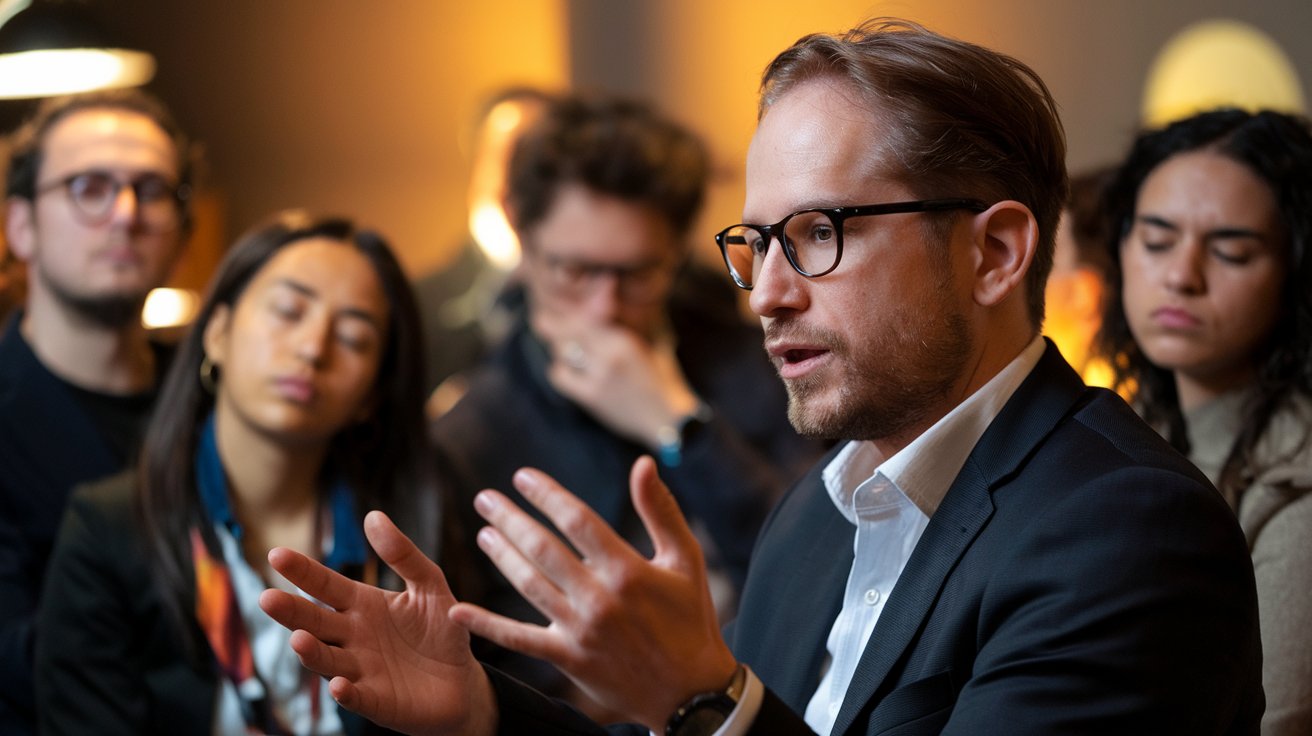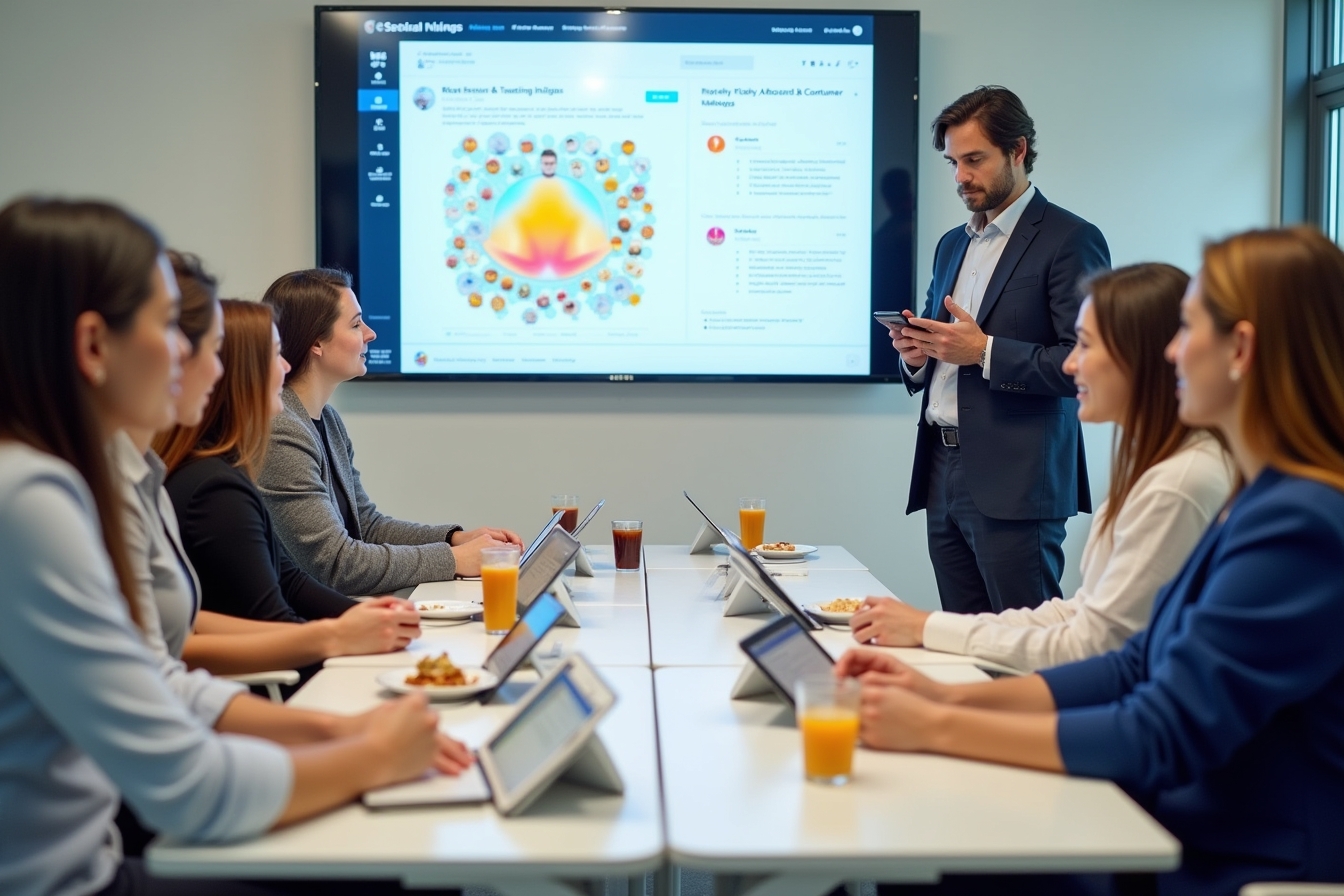B2B ethnographic market research

Have you ever wondered what drives businesses to make the choices they do? In the intricate web of the B2B landscape, understanding the “why” behind corporate decisions is critical.
This is where B2B ethnographic market research steps in, uncovering the underlying motivations and behaviors of businesses in their natural habitats… But why is this form of research so vital in today’s fast-evolving business environment? Let’s delve into the world of B2B ethnographic marktonderzoek to find out.
What is an Ethnographic Interview?
B2B ethnographic market research involves being immersed in or living with a culture, but it could also pertain to a corporation or business entity. In-person interviews help to understand behaviors, attitudes, motivations and preferences, and sometimes social rituals. If you put these together you have the core of a B2B ethnographic interview.
B2B ethnographic market research provides in-depth insights into behavior by observing the workplace, people, decision-making, and non-verbal communication that can emerge in the course of the interview. Prototypes and messaging can be tested with respondents. Because the interviews are held in the respondents’ workplace, it simulates the decision-making environment.
As a qualitative technique, it is a micro version of an ethnographic study in which people who are performing tasks in a natural business situation are observed, and asked what they are doing, why they are doing it, and what they are thinking about.
Though most ethnographic studies are done in the home or community for many days, it is possible and highly informative to interview people in their work environment – if only for an hour or two. Doing so provides a rich background about the physical space, equipment, furnishings, coworkers, and other resources that impact the actions, mood, and performance of a person doing their job within a corporate culture.
Importance of B2B Ethnographic Market Research in the Current Business Environment

The business landscape is becoming increasingly complex and dynamic. Globalization, digital transformation, and evolving market demands have made it imperative for businesses to understand not just their end consumers but also their business partners, suppliers, and competitors. This is where B2B ethnographic market research comes into play.
Unlike other research methodologies that rely on surveys or data analytics, B2B ethnographic market research focuses on immersive observation and understanding. This form of research captures the nuances of business culture, decision-making processes, and the interplay of various stakeholders.
Here’s a closer look at some of these benefits:
• Deeper Insights: B2B ethnographic market research goes beyond the surface. It dives deep into the daily routines, challenges, and motivations of businesses, providing insights that are difficult to attain through conventional methods.
• Targeted Marketing and Messaging: Ethnographic research reveals the language, values, and priorities of B2B stakeholders. With this knowledge, organizations can tailor their marketing messages to resonate with their audience, increasing the effectiveness of their communication efforts.
• Risicobeperking: Understanding the challenges and pain points of B2B partners allows organizations to proactively address potential issues and risks.
• Competitive Intelligence: B2B ethnographic market research can shed light on the strategies and practices of competitors within the B2B space.
• Cultural Sensitivity: In a globalized business world, cultural differences can significantly impact B2B interactions. Ethnographic research aids in understanding cultural nuances, enabling organizations to navigate international markets with greater sensitivity and effectiveness.
• Innovation Catalyst: Immersion in the B2B environment sparks innovation. Observing how businesses operate and interact can inspire fresh ideas and creative solutions that can drive business growth.
• Long-term Relationships: By demonstrating a commitment to understanding the unique needs of their B2B partners, organizations can build stronger, more enduring relationships.
• Data-Driven Decision-making: B2B ethnographic market research provides organizations with concrete data and real-world observations.
• Enhancing Customer Service: Observing the day-to-day operations of businesses can reveal pain points in terms of service or support. Addressing these can lead to elevated levels of customer satisfaction and loyalty.
• Training & Development: The nuances picked up about business behavior, decision-making, and values can be incorporated into training modules, ensuring that teams are well-equipped to serve B2B clients efficiently.
When to use Ethnographic Interviews

For a company that sells a product or service, it becomes possible to actually observe how and when it is used in the real world at the time it is being used. Questionnaires can be administered before and after a visit to complement the detailed open-ended and probing questions asked during an on-site interview.
The main difference between a typical market research interview and an ethnographic one is the attention paid to the surroundings of the respondent. Among other things, one can actually see if a person works in a cubicle or a private office, with many or few colleagues, in a quiet area or one with distractions – any of which may affect how tasks get done.
How is a B2B Ethnographic Interview conducted?
- A Discussion Guide should be developed to frame the content to be covered. Subjects should be told in advance that they might be asked to perform an activity and/or show how they use a product or service in the course of completing it. Sample questions include:
- Under what circumstances do you use the product?
- How exactly is it used?
- Does it entirely solve the problem, or get used to something else?
- How does the product compare to alternatives (from competitors)?
- Is it used for other (unintended) purposes?
- Who else uses it – e.g. a colleague with the same, or a different function?
- Sometimes a second researcher is present to take notes and make additional observations while the interviewer is focused entirely on the dialog with the respondent.
- Because of heightened security since 9/11 in nearly all businesses, the taking of photos or videos within a factory, office building or store is often discouraged or outright banned. Pictures may be taken from the exterior (e.g. public parking lot or road) or obtained via online sources such as Google Earth or Maps. The more you can gather about the person’s environment, the better able you will be to ask about, and understand the respondent.
- Interior pictures may still be obtained with the proper authorization gained in advance of any visit/interview. An alternative is to ask subjects to take their own, non-proprietary photos of their workspace, products being used, colleagues, and open spaces such as a cafeteria, break room, or meeting room. If photos of the interviewees themselves can be obtained, they can be shared as part of a report of findings that will help others to “see” who was interviewed. They can be used to create a persona of the B2B buyer of interest to the client.
- Before the interview, it is possible to have a subject complete a short diary or survey describing a typical day or week including key responsibilities, sources or products used, or approximate time required for a common task.
- After the interview, a different short survey can be developed based on the total set of interviews and observations.
- By combining all of the findings from qualitative (b2b ethnographic interviews, focus groups) and quantitative (pre and post-surveys) methods, a business will be in a better position to understand many more of the subtle factors and desired features that ultimately impact a buying decision. Having this information is highly valuable to the production, marketing and sales functions who may be charged with creating new products or services that better fulfill user needs.
- Recruiting and compensation:
- Unlike many other types of market research, ethnographic interviewing cannot be done online, over the phone or in any way other than face-to-face.
- The amount of compensation will depend upon how much time will be needed for the interview (perhaps an hour that coincides with lunch, over coffee before the start of the workday, or at the workplace after the workday).
- If additional tasks are requested, there should be additional payment for each. For example, offer $100 for the interview, $25 for a pre and post-survey, and $25 for a set of photos that meet client requirements (this could also be a condition for payment for the interview).
Opportunities in Conducting B2B Ethnographic Market Research:

The landscape of B2B transactions is vast – and with B2B ethnographic market research, there’s a golden opportunity to unlock secrets that can lead to business growth and transformation. Here’s a look at the avenues that this research method can open:
• New Product Development: With a comprehensive understanding of business operations and challenges, there’s a potential to identify gaps in the market. This can lead to the development of innovative products or services tailored specifically to address these gaps.
• Strengthening Brand Positioning: Through B2B ethnographic market research, businesses can unveil unique selling propositions that resonate strongly with their target business audience. This can significantly elevate brand positioning and recognition.
• Expansion into New Markets: By studying businesses in diverse sectors or regions, there’s a possibility to identify untapped or underserved markets. The insights garnered can guide expansion strategies, ensuring a smoother entry and greater success.
Collaborative Ventures: Recognizing complementary business needs or services can lead to beneficial partnerships or collaborations, opening doors to shared resources, knowledge, or client bases.
• Cross-Industry Insights: Ethnographic research can provide cross-industry insights. Organizations can learn from the best practices of B2B partners in other sectors, sparking innovation and the adoption of successful strategies from different industries.
Challenges of Conducting B2B Ethnographic Market Research
B2B ethnographic market research presents challenges – and navigating the B2B environment requires tact, understanding, and a deep commitment to research ethics. Let’s delve into some of the significant challenges businesses might encounter:
• Access to B2B Environments: Gaining access to the natural environments of B2B partners can be challenging. Businesses are often protective of their operations and may be reluctant to grant researchers access.
• Time-Intensive: Ethnographic research is time-intensive. Researchers may need to spend extended periods in the field, observing and interacting with B2B stakeholders. This can be resource-intensive for organizations.
• Costs: Immersive research can incur significant costs, including travel expenses, researcher salaries, and data analysis expenses. Managing the budget for ethnographic research can be a challenge for some organizations.
• Data Analysis Complexity: Analyzing qualitative data from ethnographic research can be complex. Researchers must make sense of rich, context-specific data, which may require specialized skills and tools.
• Generalizability: Ethnographic research typically focuses on specific contexts and cases. Generalizing findings to broader populations or industries can be challenging, making it important to carefully define the scope and objectives of the research.
• Limited Sample Size: B2B ethnographic market research often involves a limited sample size due to the intensive nature of the approach. It can raise questions about the representativeness of the findings.
• Long-Term Commitment: Successful ethnographic research often requires a long-term commitment. Researchers may need to revisit B2B partners multiple times over an extended period to capture evolving behaviors and trends.
Onze vestigingslocatie in New York
11 E 22nd Street, 2e verdieping, New York, NY 10010 T: +1(212) 505-6805
Over SIS Internationaal
SIS Internationaal biedt kwantitatief, kwalitatief en strategisch onderzoek. Wij bieden data, tools, strategieën, rapporten en inzichten voor besluitvorming. Wij voeren ook interviews, enquêtes, focusgroepen en andere marktonderzoeksmethoden en -benaderingen uit. Neem contact met ons op voor uw volgende marktonderzoeksproject.



